Linear Actuator on:
[Wikipedia]
[Google]
[Amazon]
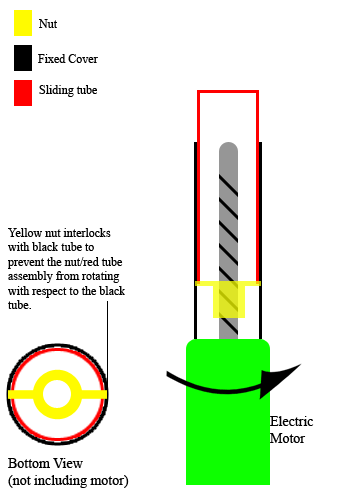
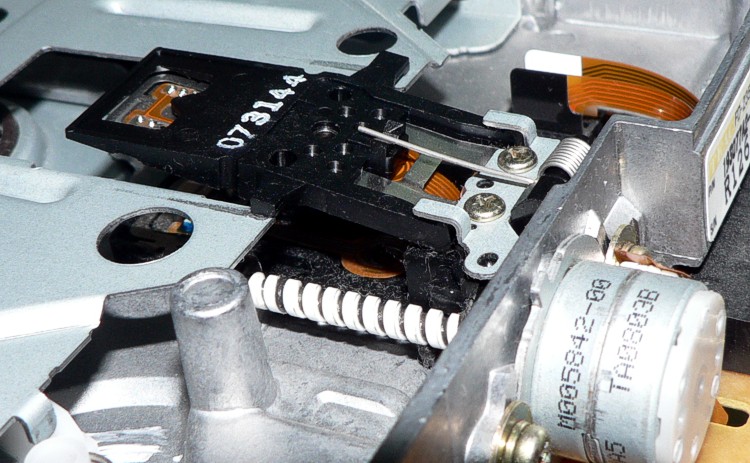 A linear actuator is an
A linear actuator is an
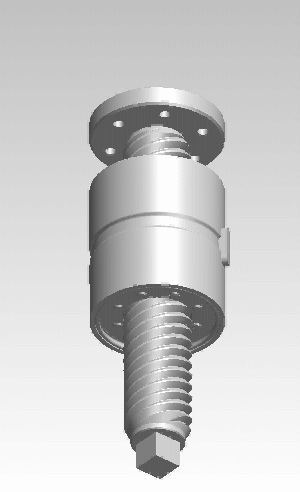
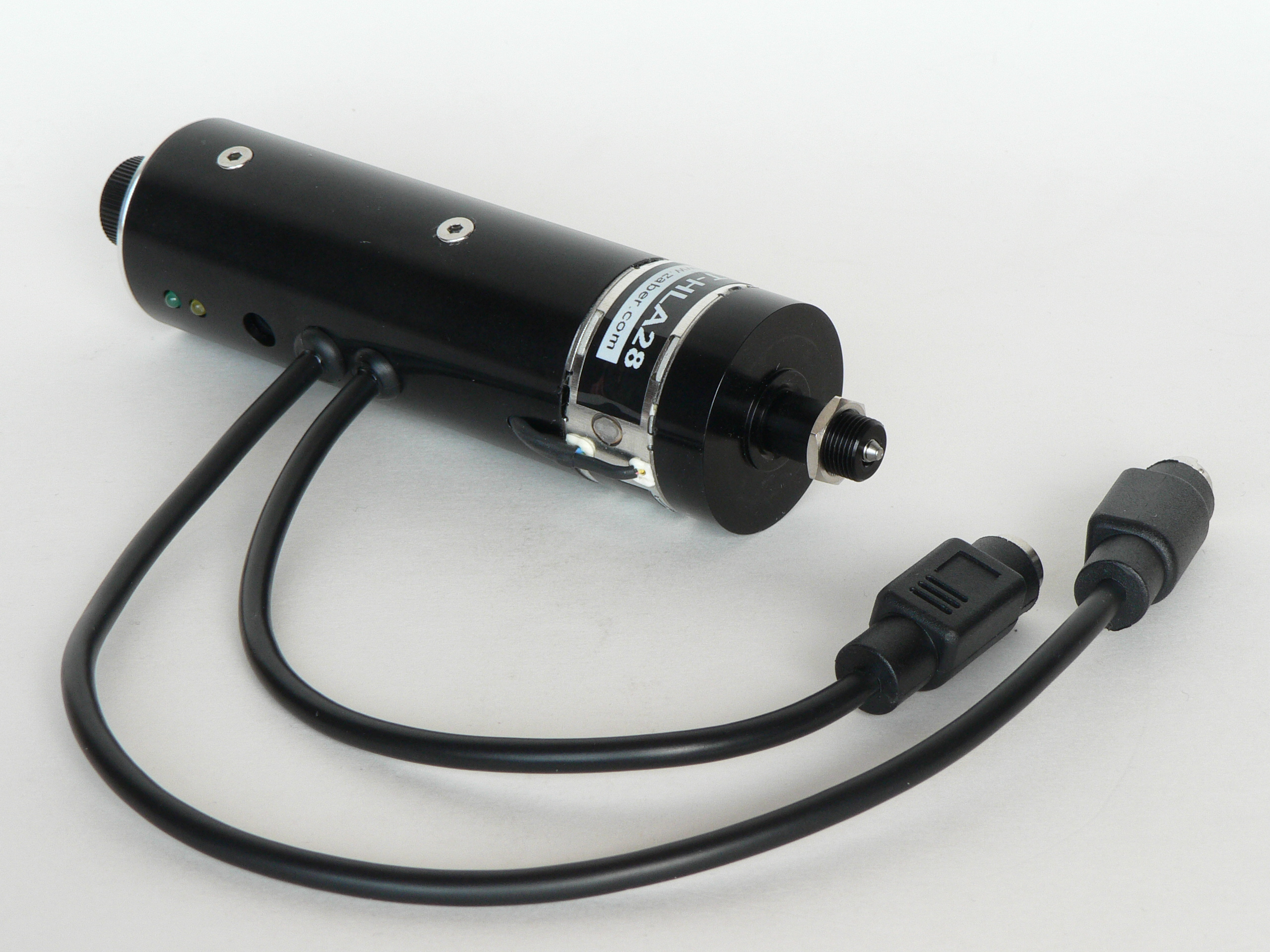

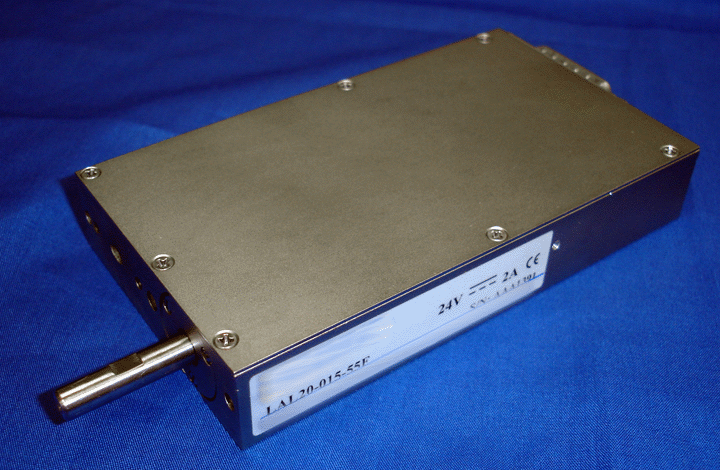 Electro-mechanical actuators are similar to mechanical actuators except that the control knob or handle is replaced with an
Electro-mechanical actuators are similar to mechanical actuators except that the control knob or handle is replaced with an
Electric Actuators
, Baelz Automatic, retrieved May 12, 2016 There are many types of motors that can be used in a linear actuator system. These include dc brush, dc brushless, stepper, or in some cases, even induction motors. It all depends on the application requirements and the loads the actuator is designed to move. For example, a linear actuator using an integral horsepower AC induction motor driving a lead screw can be used to operate a large valve in a refinery. In this case, accuracy and high movement resolution aren't needed, but high force and speed are. For electromechanical linear actuators used in laboratory instrumentation robotics, optical and laser equipment, or X-Y tables, fine resolution in the micron range and high accuracy may require the use of a fractional horsepower stepper motor linear actuator with a fine pitch lead screw. There are many variations in the electromechanical linear actuator system. It is critical to understand the design requirements and application constraints to know which one would be best.
 Telescoping linear actuators are specialized linear actuators used where space restrictions exist. Their range of motion is many times greater than the unextended length of the actuating member.
A common form is made of concentric tubes of approximately equal length that extend and retract like sleeves, one inside the other, such as the telescopic cylinder.
Other more specialized telescoping actuators use actuating members that act as rigid linear shafts when extended, but break that line by folding, separating into pieces and/or uncoiling when retracted. Examples of telescoping linear actuators include:
* Helical band actuator
*
Telescoping linear actuators are specialized linear actuators used where space restrictions exist. Their range of motion is many times greater than the unextended length of the actuating member.
A common form is made of concentric tubes of approximately equal length that extend and retract like sleeves, one inside the other, such as the telescopic cylinder.
Other more specialized telescoping actuators use actuating members that act as rigid linear shafts when extended, but break that line by folding, separating into pieces and/or uncoiling when retracted. Examples of telescoping linear actuators include:
* Helical band actuator
*
Leo Dorst's Lego linear actuator
{{DEFAULTSORT:Linear Actuator Actuators Positioning instruments Articles containing video clips

 A linear actuator is an
A linear actuator is an actuator
An actuator is a component of a machine that is responsible for moving and controlling a mechanism or system, for example by opening a valve. In simple terms, it is a "mover".
An actuator requires a control device (controlled by control signal) a ...
that creates motion in a straight line, in contrast to the circular motion of a conventional electric motor
An electric motor is an electrical machine that converts electrical energy into mechanical energy. Most electric motors operate through the interaction between the motor's magnetic field and electric current in a wire winding to generate f ...
. Linear actuators are used in machine tools and industrial machinery, in computer peripherals such as disk drives and printers, in valves and dampers, and in many other places where linear motion is required. Hydraulic
Hydraulics (from Greek: Υδραυλική) is a technology and applied science using engineering, chemistry, and other sciences involving the mechanical properties and use of liquids. At a very basic level, hydraulics is the liquid counte ...
or pneumatic
Pneumatics (from Greek ‘wind, breath’) is a branch of engineering that makes use of gas or pressurized air.
Pneumatic systems used in industry are commonly powered by compressed air or compressed inert gases. A centrally located and ...
cylinders inherently produce linear motion. Many other mechanisms are used to generate linear motion from a rotating motor.
Types
Mechanical actuators

Mechanical
Mechanical may refer to:
Machine
* Machine (mechanical), a system of mechanisms that shape the actuator input to achieve a specific application of output forces and movement
* Mechanical calculator, a device used to perform the basic operations ...
linear actuators typically operate by conversion of rotary motion into linear motion. Conversion is commonly made via a few simple types of mechanism:
* Screw
A screw and a bolt (see '' Differentiation between bolt and screw'' below) are similar types of fastener typically made of metal and characterized by a helical ridge, called a ''male thread'' (external thread). Screws and bolts are used to ...
: leadscrew
A leadscrew (or lead screw), also known as a power screw or translation screw,Bhandari, p. 202. is a screw used as a linkage in a machine, to translate turning motion into linear motion. Because of the large area of sliding contact between ...
, screw jack
A jackscrew, or screw jack, is a type of jack that is operated by turning a leadscrew. It is commonly used to lift moderately and heavy weights, such as vehicles; to raise and lower the horizontal stabilizers of aircraft; and as adjustable supp ...
, ball screw and roller screw actuators all operate on the principle of the simple machine
A simple machine is a mechanical device that changes the direction or magnitude of a force. In general, they can be defined as the simplest mechanisms that use mechanical advantage (also called leverage) to multiply force. Usually the term r ...
known as the screw. By rotating the actuator's nut, the screw shaft moves in a line.
* Wheel and axle
The wheel and axle is a simple machine consisting of a wheel attached to a smaller axle so that these two parts rotate together in which a force is transferred from one to the other. The wheel and axle can be viewed as a version of the lever, wi ...
: Hoist
Hoist may refer to:
* Hoist (device), a machine for lifting loads
* Hoist controller, a machine for raising and lowering goods or personnel by means of a cable
* Hydraulic hooklift hoist, another machine
* Hoist (mining), another machine
* Hoist ( ...
, winch
A winch is a mechanical device that is used to pull in (wind up) or let out (wind out) or otherwise adjust the tension of a rope or wire rope (also called "cable" or "wire cable").
In its simplest form, it consists of a spool (or drum) attach ...
, rack and pinion
A rack and pinion is a type of linear actuator that comprises a circular gear (the '' pinion'') engaging a linear gear (the ''rack''). Together, they convert rotational motion into linear motion. Rotating the pinion causes the rack to be driven ...
, chain drive
Chain drive is a way of transmitting mechanical power from one place to another. It is often used to convey power to the wheels of a vehicle, particularly bicycles and motorcycles. It is also used in a wide variety of machines besides vehicles.
...
, belt drive
A belt is a loop of flexible material used to link two or more rotating shafts mechanically, most often parallel. Belts may be used as a source of motion, to transmit power efficiently or to track relative movement. Belts are looped over pulle ...
, rigid chain and rigid belt actuators operate on the principle of the wheel and axle. A rotating wheel moves a cable, rack, chain or belt to produce linear motion.
* Cam: Cam actuators function on a principle similar to that of the wedge, but provide relatively limited travel. As a wheel-like cam rotates, its eccentric shape provides thrust at the base of a shaft.
Some mechanical linear actuators only pull, such as hoists, chain drive and belt drives. Others only push (such as a cam actuator
Calmodulin (CaM) (an abbreviation for calcium-modulated protein) is a multifunctional intermediate calcium-binding messenger protein expressed in all eukaryotic cells. It is an intracellular target of the secondary messenger Ca2+, and the bind ...
). Pneumatic and hydraulic cylinders, or lead screws can be designed to generate force in both directions.
Mechanical actuators typically convert rotary motion of a control knob or handle into linear displacement via screws and/or gears to which the knob or handle is attached. A jackscrew or car jack is a familiar mechanical actuator. Another family of actuators are based on the segmented spindle. Rotation of the jack handle is converted mechanically into the linear motion of the jack head. Mechanical actuators are also frequently used in the field of lasers and optics to manipulate the position of linear stages, rotary stages, mirror mounts, goniometers and other positioning instruments. For accurate and repeatable positioning, index marks may be used on control knobs. Some actuators include an encoder and digital position readout. These are similar to the adjustment knobs used on micrometer Micrometer can mean:
* Micrometer (device), used for accurate measurements by means of a calibrated screw
* American spelling of micrometre
The micrometre ( international spelling as used by the International Bureau of Weights and Measures; ...
s except their purpose is position adjustment rather than position measurement.
Hydraulic actuators
Hydraulic actuators
A hydraulic cylinder (also called a linear hydraulic motor) is a mechanical actuator that is used to give a unidirectional force through a unidirectional stroke. It has many applications, notably in construction equipment ( engineering vehicles ...
or hydraulic cylinders typically involve a hollow cylinder having a piston inserted in it. An unbalanced pressure applied to the piston generates a force that can move an external object. Since liquid
A liquid is a nearly incompressible fluid that conforms to the shape of its container but retains a (nearly) constant volume independent of pressure. As such, it is one of the four fundamental states of matter (the others being solid, gas, ...
s are nearly incompressible, a hydraulic cylinder can provide controlled precise linear displacement of the piston. The displacement is only along the axis of the piston. A familiar example of a manually operated hydraulic actuator is a hydraulic car jack. Typically though, the term "hydraulic actuator" refers to a device controlled by a hydraulic pump
Hydraulic pumps are used in hydraulic drive systems and can be hydrostatic or hydrodynamic. A hydraulic pump is a mechanical source of power that converts mechanical power into hydraulic energy ( hydrostatic energy i.e. flow, pressure). It genera ...
.
Pneumatic actuators
Pneumatic
Pneumatics (from Greek ‘wind, breath’) is a branch of engineering that makes use of gas or pressurized air.
Pneumatic systems used in industry are commonly powered by compressed air or compressed inert gases. A centrally located and ...
actuators, or pneumatic cylinders, are similar to hydraulic actuators except they use compressed air to generate force instead of a liquid. They work similarly to a piston in which air is pumped inside a chamber and pushed out of the other side of the chamber. Air actuators are not necessarily used for heavy duty machinery and instances where large amounts of weight are present. One of the reasons pneumatic linear actuators are preferred to other types is the fact that the power source is simply an air compressor. Because air is the input source, pneumatic actuators are able to be used in many places of mechanical activity. The downside is, most air compressors are large, bulky, and loud. They are hard to transport to other areas once installed. Pneumatic linear actuators are likely to leak and this makes them less efficient than mechanical linear actuators.
Piezoelectric actuators
The piezoelectric effect is a property of certain materials in which application of a voltage to the material causes it to expand. Very high voltages correspond to only tiny expansions. As a result, piezoelectric actuators can achieve extremely fine positioning resolution, but also have a very short range of motion. In addition, piezoelectric materials exhibithysteresis
Hysteresis is the dependence of the state of a system on its history. For example, a magnet may have more than one possible magnetic moment in a given magnetic field, depending on how the field changed in the past. Plots of a single component of ...
which makes it difficult to control their expansion in a repeatable manner.
Electro-mechanical actuators


 Electro-mechanical actuators are similar to mechanical actuators except that the control knob or handle is replaced with an
Electro-mechanical actuators are similar to mechanical actuators except that the control knob or handle is replaced with an electric motor
An electric motor is an electrical machine that converts electrical energy into mechanical energy. Most electric motors operate through the interaction between the motor's magnetic field and electric current in a wire winding to generate f ...
. Rotary motion
Rotation around a fixed axis is a special case of rotational motion. The fixed- axis hypothesis excludes the possibility of an axis changing its orientation and cannot describe such phenomena as wobbling or precession. According to Euler's ...
of the motor is converted to linear displacement. Electromechanical actuators may also be used to power a motor that converts electrical energy
Electrical energy is energy related to forces on electrically charged particles and the movement of electrically charged particles (often electrons in wires, but not always). This energy is supplied by the combination of electric current and elect ...
into mechanical torque
In physics and mechanics, torque is the rotational equivalent of linear force. It is also referred to as the moment of force (also abbreviated to moment). It represents the capability of a force to produce change in the rotational motion of th ...
. There are many designs of modern linear actuators and every company that manufactures them tends to have a proprietary method. The following is a generalized description of a very simple electro-mechanical linear actuator.
Simplified design
Typically, an electric motor is mechanically connected to rotate alead screw
A leadscrew (or lead screw), also known as a power screw or translation screw,Bhandari, p. 202. is a screw used as a linkage in a machine, to translate turning motion into linear motion. Because of the large area of sliding contact between t ...
. A lead screw has a continuous helical thread machined on its circumference running along the length (similar to the thread on a bolt). Threaded onto the lead screw is a lead nut or ball nut
A ball screw (or ballscrew) is a mechanical linear actuator that translates rotational motion to linear motion with little friction. A threaded shaft provides a helical raceway for ball bearings which act as a precision screw. As well as bein ...
with corresponding helical threads. The nut is prevented from rotating with the lead screw (typically the nut interlocks with a non-rotating part of the actuator body). When the lead screw is rotated, the nut will be driven along the threads. The direction of motion of the nut depends on the direction of rotation of the lead screw. By connecting linkages to the nut, the motion can be converted to usable linear displacement. Most current actuators are built for high speed, high force, or a compromise between the two. When considering an actuator for a particular application, the most important specifications are typically travel, speed, force, accuracy, and lifetime. Most varieties are mounted on dampers or butterfly valves., Baelz Automatic, retrieved May 12, 2016 There are many types of motors that can be used in a linear actuator system. These include dc brush, dc brushless, stepper, or in some cases, even induction motors. It all depends on the application requirements and the loads the actuator is designed to move. For example, a linear actuator using an integral horsepower AC induction motor driving a lead screw can be used to operate a large valve in a refinery. In this case, accuracy and high movement resolution aren't needed, but high force and speed are. For electromechanical linear actuators used in laboratory instrumentation robotics, optical and laser equipment, or X-Y tables, fine resolution in the micron range and high accuracy may require the use of a fractional horsepower stepper motor linear actuator with a fine pitch lead screw. There are many variations in the electromechanical linear actuator system. It is critical to understand the design requirements and application constraints to know which one would be best.
Standard vs compact construction
A linear actuator using standard motors will commonly have the motor as a separate cylinder attached to the side of the actuator, either parallel with the actuator or perpendicular to the actuator. The motor may be attached to the end of the actuator. The drive motor is of typical construction with a solid drive shaft that is geared to the drive nut or drive screw of the actuator. Compact linear actuators use specially designed motors that try to fit the motor and actuator into the smallest possible shape. * The inner diameter of the motor shaft can be enlarged, so that the drive shaft can be hollow. The drive screw and nut can therefore occupy the center of the motor, with no need for additional gearing between the motor and the drive screw. * Similarly the motor can be made to have a very small outside diameter, but instead the pole faces are stretched lengthwise so the motor can still have very high torque while fitting in a small diameter space.Principles
In the majority of linear actuator designs, the basic principle of operation is that of aninclined plane
An inclined plane, also known as a ramp, is a flat supporting surface tilted at an angle from the vertical direction, with one end higher than the other, used as an aid for raising or lowering a load. The inclined plane is one of the six cla ...
. The threads of a lead screw act as a continuous ramp that allows a small rotational force to be used over a long distance to accomplish the movement of a large load over a short distance.
The power supply is from a DC or AC motor. The typical motor is a 12v DC, but other voltages are available. Actuators have a switch to reverse the polarity of the motor, which makes the actuator change its motion.
The speed and force of an actuator depend on its gearbox. The amount of force depends on the actuator’s speed. Lower speeds supply greater force because motor speed and force are constant.
One of the basic differences between actuators is their stroke, which is defined by the length of the screw and shaft. Speed depends on the gears that connect the motor to the screw.
The mechanism to stop the stroke of an actuator is a limit or micro switch, which can be seen in the image below. Microswitches are located at the top and bottom of the shaft and are triggered by the up and down movement of the screw.
Variations
Many variations on the basic design have been created. Most focus on providing general improvements such as a higher mechanical efficiency, speed, or load capacity. There is also a large engineering movement towards actuator miniaturization. Most electro-mechanical designs incorporate a lead screw and lead nut. Some use a ball screw and ball nut. In either case the screw may be connected to a motor or manual control knob either directly or through a series of gears. Gears are typically used to allow a smaller (and weaker) motor spinning at a higher rpm to be geared down to provide the torque necessary to spin the screw under a heavier load than the motor would otherwise be capable of driving directly. Effectively this sacrifices actuator speed in favor of increased actuator thrust. In some applications the use ofworm gear
A worm drive is a gear arrangement in which a worm (which is a gear in the form of a screw) meshes with a worm wheel (which is similar in appearance to a spur gear). The two elements are also called the worm screw and worm gear. The terminol ...
is common as this allow a smaller built in dimension still allowing great travel length.
A traveling-nut linear actuator has a motor that stays attached to one end of the lead screw (perhaps indirectly through a gear box), the motor spins the lead screw, and the lead nut is restrained from spinning so it travels up and down the lead screw.
A traveling-screw linear actuator has a lead screw that passes entirely through the motor.
In a traveling-screw linear actuator, the motor "crawls" up and down a lead screw that is restrained from spinning. The only spinning parts are inside the motor, and may not be visible from the outside.
Some lead screws have multiple "starts". This means they have multiple threads alternating on the same shaft. One way of visualizing this is in comparison to the multiple color stripes on a candy cane. This allows for more adjustment between thread pitch and nut/screw thread contact area, which determines the extension speed and load carrying capacity (of the threads), respectively.
Static load capacity
Linear screw actuators can have a static loading capacity, meaning that when the motor stops the actuator essentially locks in place and can support a load that is either pulling or pushing on the actuator. This static load capacity increases mobility and speed. The braking force of the actuator varies with the angular pitch of the screw threads and the specific design of the threads.Acme thread
Trapezoidal thread forms are screw thread profiles with trapezoidal outlines. They are the most common forms used for leadscrews (power screws). They offer high strength and ease of manufacture. They are typically found where large loads are re ...
s have a very high static load capacity, while ball screws have an extremely low load capacity and can be nearly free-floating.
Generally it is not possible to vary the static load capacity of screw actuators without additional technology. The screw thread pitch and drive nut design defines a specific load capacity that cannot be dynamically adjusted.
In some cases, high viscosity grease can be added to linear screw actuators to increase the static load. Some manufacturers use this to alter the load for specific needs.
Static load capacity can be added to a linear screw actuator using an electromagnetic brake
Electromagnetic brakes (also called electro-mechanical brakes or EM brakes) slow or stop motion using electromagnetic force to apply mechanical resistance (friction). They were originally called "electro-mechanical brakes," but over the years the ...
system, which applies friction to the spinning drive nut. For example, a spring may be used to apply brake pads to the drive nut, holding it in position when power is turned off. When the actuator needs to be moved, an electromagnet counteracts the spring and releases the braking force on the drive nut.
Similarly an electromagnetic ratchet mechanism can be used with a linear screw actuator so that the drive system lifting a load will lock in position when power to the actuator is turned off. To lower the actuator, an electromagnet is used to counteract the spring force and unlock the ratchet.
Dynamic load capacity
Dynamic load capacity is typically referred to as the amount of force the linear actuator is capable of providing during operation. This force will vary with screw type (amount of friction restricting movement) and the motor driving the movement. Dynamic load is the figure which most actuators are classified by, and is a good indication of what applications it would suit best.Speed control
In most cases when using an electro-mechanical actuator, it is preferred to have some type of speed control. Such controllers vary the voltage supplied to the motor, which in turn changes the speed at which the lead screw turns. Adjusting the gear ratio is another way to adjust speed. Some actuators are available with several different gearing options.Duty cycle
The duty cycle of a motor refers to the amount of time the actuator can be run before it needs to cool down. Staying within this guideline when operating an actuator is key to its longevity and performance. If the duty cycle rating is exceeded, then overheating, loss of power, and eventual burning of the motor is risked.Linear motors
Alinear motor
A linear motor is an electric motor that has had its stator and rotor "unrolled", thus, instead of producing a torque (rotation), it produces a linear force along its length. However, linear motors are not necessarily straight. Characteristica ...
is functionally the same as a rotary electric motor with the rotor
Rotor may refer to:
Science and technology
Engineering
* Rotor (electric), the non-stationary part of an alternator or electric motor, operating with a stationary element so called the stator
*Helicopter rotor, the rotary wing(s) of a rotorcraft ...
and stator
The stator is the stationary part of a rotary system, found in electric generators, electric motors, sirens, mud motors or biological rotors. Energy flows through a stator to or from the rotating component of the system. In an electric m ...
circular magnetic field components laid out in a straight line. Where a rotary motor would spin around and re-use the same magnetic pole faces again, the magnetic field structures of a linear motor are physically repeated across the length of the actuator.
Since the motor moves in a linear fashion, no lead screw is needed to convert rotary motion to linear. While high capacity is possible, the material and/or motor limitations on most designs are surpassed relatively quickly due to a reliance solely on magnetic attraction and repulsion forces. Most linear motors have a low load capacity compared to other types of linear actuators.
Linear motors have an advantage in outdoor or dirty environments in that the two halves do not need to contact each other, and so the electromagnetic drive coils can be waterproofed and sealed against moisture and corrosion, allowing for a very long service life. Linear motors are being used extensively in high performance positioning systems for applications which require various combinations of high velocity, high precision and high force.
Telescoping linear actuator
 Telescoping linear actuators are specialized linear actuators used where space restrictions exist. Their range of motion is many times greater than the unextended length of the actuating member.
A common form is made of concentric tubes of approximately equal length that extend and retract like sleeves, one inside the other, such as the telescopic cylinder.
Other more specialized telescoping actuators use actuating members that act as rigid linear shafts when extended, but break that line by folding, separating into pieces and/or uncoiling when retracted. Examples of telescoping linear actuators include:
* Helical band actuator
*
Telescoping linear actuators are specialized linear actuators used where space restrictions exist. Their range of motion is many times greater than the unextended length of the actuating member.
A common form is made of concentric tubes of approximately equal length that extend and retract like sleeves, one inside the other, such as the telescopic cylinder.
Other more specialized telescoping actuators use actuating members that act as rigid linear shafts when extended, but break that line by folding, separating into pieces and/or uncoiling when retracted. Examples of telescoping linear actuators include:
* Helical band actuator
* Rigid belt actuator
A rigid belt actuator, also known as a push-pull belt actuator or zipper belt actuator, is a specialized mechanical linear actuator used in push-pull and lift applications. The actuator is a belt and pinion device that forms a telescoping beam or ...
* Rigid chain actuator
A rigid chain actuator, known variously as a linear chain actuator, push-pull chain actuator, electric chain actuator or column-forming chain actuator, is a specialized mechanical linear actuator used in window operating, push-pull material handl ...
* Segmented spindle
Advantages and disadvantages
See also
* * * *References
External links
Leo Dorst's Lego linear actuator
{{DEFAULTSORT:Linear Actuator Actuators Positioning instruments Articles containing video clips